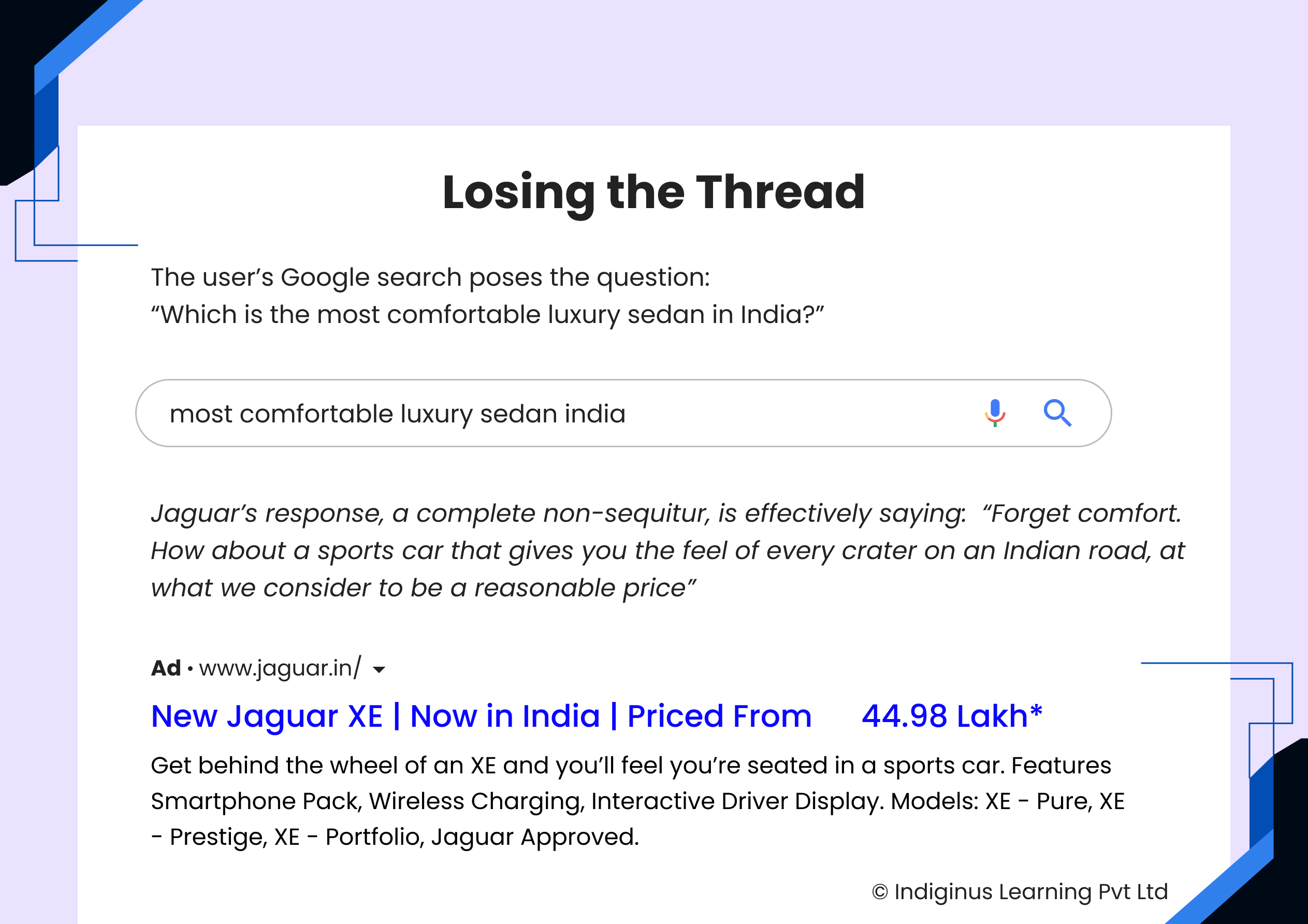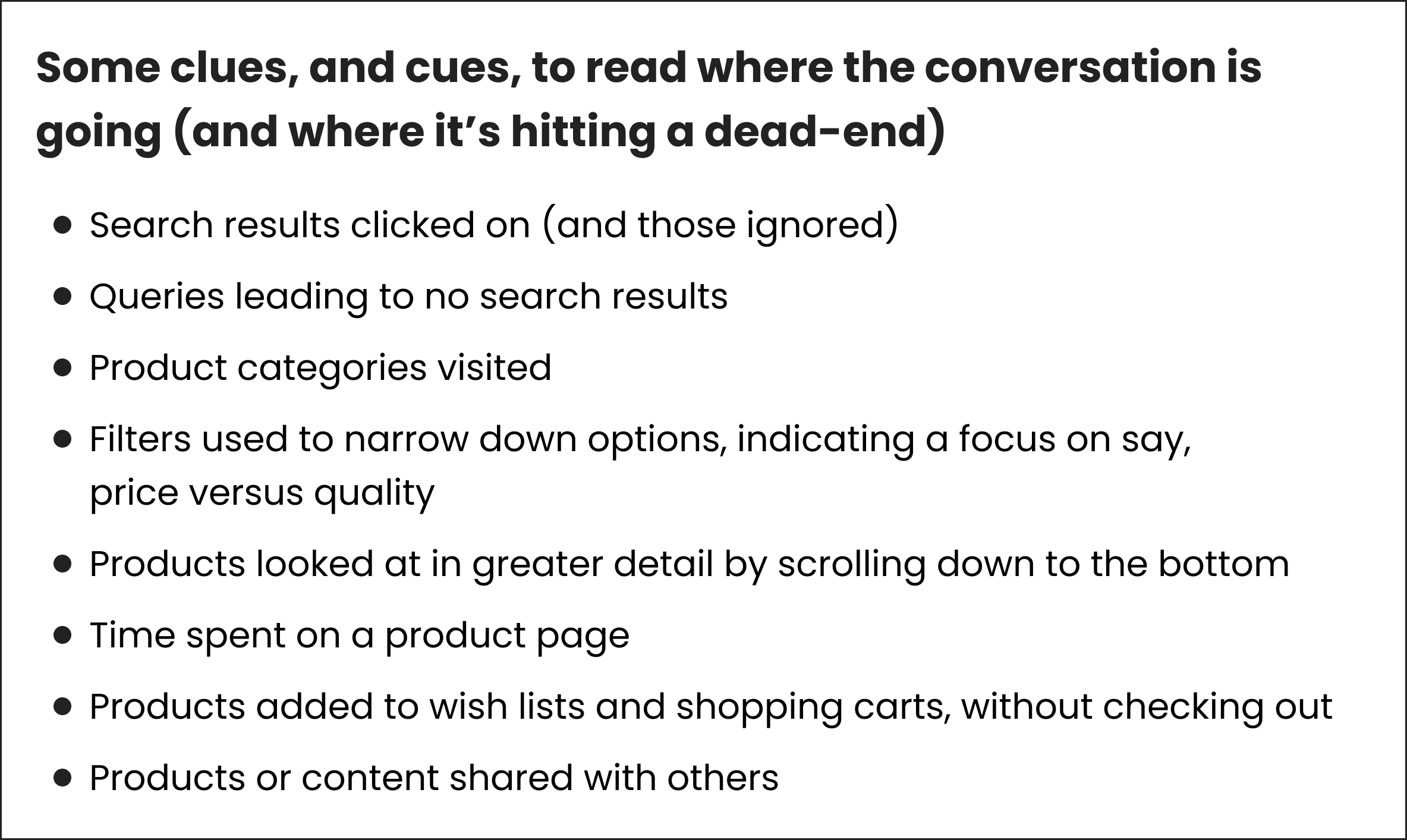We view paintings, photography and television, listen to the radio, and read books and newspapers. The common thread across all of them? Each medium corresponds to a mode of communication that humans have evolved for.
When the internet came along in the mid 1990s however, it left us searching for human parallels. Were we to think of it as viewing, listening or reading? Clearly none of the above, as it caters to all of those senses. Some described it as a ‘channel’ for multiple modes of communication. Others vaguely offered that we must think of it ‘differently’, but couldn’t quite explain how. Although correct, these answers were, and are, incomplete.
Some may wonder whether the question itself – of finding a human analogue – is important. I would suggest it is crucial, as applying an intuitively clear metaphor to new media forms allows us to conceptualise and refine their use.
When the motion camera first came along, it was used to train a single, immobile lens onto a theatre stage. Only when we compared it to the act of seeing, truly seeing, were we able to innovate the art form towards close-ups of faces and objects, and tracking their movements.
So, what does the internet correspond to in human terms? I suggest it is a medium for conversations. Like a telephone call? Or even letters? Well yes, in a sense, but with the facility of many simultaneous conversations, using multiple media, with innuendo and subtle cues often substituting for directness, and conversations lasting as little as a few seconds or extending for days, weeks and even months.
internet came along in the mid 1990s however, it left us searching for human parallels. Were we to think of it as viewing, listening or reading? Clearly none of the above, as it caters to all of those senses. Some described it as a ‘channel’ for multiple modes of communication. Others vaguely offered that we must think of it ‘differently’, but couldn’t quite explain how. Although correct, these answers were, and are, incomplete.
Some may wonder whether the question itself – of finding a human analogue – is important. I would suggest it is crucial, as applying an instinctively clear metaphor to new media forms allows us to conceptualise and refine their use.
When the motion camera first came along, it was used to train a single, immobile lens onto a theatre stage. Only when we compared it to the act of seeing, truly seeing, were we able to innovate the art form towards close-ups of faces and objects, and tracking their movements.
So, what does the internet correspond to in human terms? I suggest it is a medium for conversations. Like a telephone call? Or even letters? Well yes, in a sense, but with the facility of many simultaneous conversations, using multiple media, with innuendo and subtle cues often substituting for directness, and conversations lasting as little as a few seconds or extending for days, weeks and even months.
What is a ‘conversation’?
Conversations comprise two essentials. Information must flow back and forth – or in group conversations, multi-directionally – and the thread of discussion must be maintained, until one transitions to the next topic.
Apply this thinking to the internet, and quite suddenly, as a digital strategist, marketer or experience designer, you achieve the consumer relevance and attention you are seeking. Let’s understand how.
Conversation starters, or the online equivalent of “Can I buy you a drink?”
Let’s look at some common online conversation starters.
- Every search query on Google is effectively saying “I am looking for X. Do you have it?”
- A post or advertisement on Instagram or Facebook implicitly says, “Are you interested in this? Here’s a hint of why you should be”
- A menu of options on a website – our products, services, about us, contact us – each a conversation starter for a different thread
A digital professional’s job is to maintain the thread of conversation from these starting points. Even today, however, it is surprising how often this doesn’t happen.
I have spoken before about how even large brands break the thread of conversation and lose the consumer’s attention. See the graphic below for an example taken from a recent Google search.

How to continue the conversation, or the online equivalent of “Thank you! A tequila-and-lime on ice would be perfect”
As the user traverses the path of conversation by searching, clicking and filtering, the astute digital professional provides an appropriate response at each stage, in the form of accurate search results, targeted messaging on landing pages, and relevant information on website pages.
This is not a conventional conversation as conducted between individuals, but if each search term or click is a question, the page or message that then appears is a relevant response that either answers that question, or asks for further clarification.
User: I want a comfortable car
Company: These are the models rated highest in comfort
User: Which ones are in my budget?
Company: Here is a short list
User: Which options are available?
Company: You can select those here
User: These are the options I am most interested in
Simple enough? Well yes, but things get complicated very quickly because users aren’t always as direct as the above conversation indicates. Instead, digital professionals must read little clues and cues to understand where the conversation is heading.

These clues may be left by the user explicitly – for instance by typing in search words or adding products to a shopping cart or signing up to receive product availability alerts, or implicitly – by visiting certain categories or products and leaving a trail via their cookies.
The smart digital professional picks up on these, and uses available contact information – mobile numbers, email addresses, cookies and browsing sessions – to continue a relevant conversation with the user. The conversation may continue on the website itself, by retargeting the user on ad networks run by companies such as Facebook and Google, or through direct communication via whatsapp, emails or push notifications.
But how do you have thousands or millions of conversations at scale?
The digital professional has to not only maintain multiple conversations with users, she also needs to remind consumers about conversations they have left midstream. With thousands or millions of people hitting your digital ads and websites every day, how do you manage this?
For conversations that are common across users, and which have generic answers, this is easy enough. This includes questions about which services you offer, the background of your company, and which products you have in your catalogue. All of these can be answered with standardised website pages showing the relevant content.
But the beauty of the internet lies in the diversity of conversations that happen simultaneously and with the huge variation in cadence across them.
Some users make quick decisions – they ask, engage, buy and leave. But most explore longer, want more details and have a more complex decision-making process. They branch off from the main conversation, and start their own threads. How does X work? How does it compare to Y? Why is the price so high? What are the top sellers in this category? What do you recommend for me?
How is a digital professional to keep track and respond?
Conduct multiple conversations through automation
This is where marketing automation comes to the rescue. While the term ‘marketing automation’ is used variously in the industry, I define it generically as applying rules and automation to:
- Detect what the user is interested in or, in the language of conversations, what she wants to talk about next
- Craft a message in response to that conversational cue or interest. This message may be pre-crafted, or generated dynamically
- Communicate to that user via whatever handle is available to you, and using the channel that is most appropriate for the message and the user (e.g. retargeting via pixels, site personalisation via cookies, messaging via whatsapp or email – depending on user preference).
With marketing automation, companies can conduct personalised, or at least narrowly targeted, conversations at scale. This is one of the key breakthroughs for business on the internet.
Previously, your best sales person could talk to one customer at a time to understand their needs and respond appropriately. Today, while marketing automation may not allow the same depth of conversation as that salesperson, it can help you talk to many more customers at the same time, and with far more data about the customer to support the conversation.
Bot or not, it’s still personal
Automation is a magical tool, when used keeping the conversational model in mind. But it can be off-the-mark and off-putting, when deployed unthinkingly with the primary goal of achieving scale rather than relevance.
For instance, e-commerce sites will retarget customers around the web with products they have viewed. Often, this is a product that the customer has only casually checked out and has little interest in, but some companies retarget indiscriminately, rather than focusing on those who actually spent time on that product page. Or the reverse happens – the customer has already bought the product, but the retargeting continues unabated.
Researchers have shown that in the early stages of the customer’s purchase journey, retargeting with generic brand ads can be more effective than promoting the individual product. Yet, companies blindly retarget with specific products, and that too without offering anything new that might rekindle the conversation – such as a fresh offer, or a competing and better rated product.
I’ll mention another little pet-peeve of mine – a by-product of thinking scale-first rather than conversation-first. Virtually every company sends out emails and newsletters from a ‘donotreply@company.com’ email address (I’ll mention here that at Indiginus our newsletter is sent from ‘pleasedoreply.’) Why? Can you imagine a salesperson talking to a customer and declaring that he will make a grand statement, but will not brook any response?
It is a trivial matter to redirect replies to your customer support team. Yet, companies would rather halt the conversation and make customers hunt around for contact information – all in the name of efficiency and scale. And all because someone in the early days of the internet decided they cannot handle a large volume of replies and established a convention that has been emulated unthinkingly.
Conversation, not one-way communication
As a digital professional working on digital communications, keep interpersonal conversations as a model, and picture how you talk to customers in person. This includes how you understand what they need, the way you pick up on verbal and non-verbal cues, and how you adapt when they change the subject – and use those as a metaphor as you scale up and automate your conversations on the internet.
Remember that whether you are using a massively automated system, or doing everything by hand, it makes absolutely no difference to the customer. He only cares about the relevance of the conversation at every moment in time.
Don’t present a beer when he has asked for a tequila. Break the thread – lose the customer (or your potential date).




